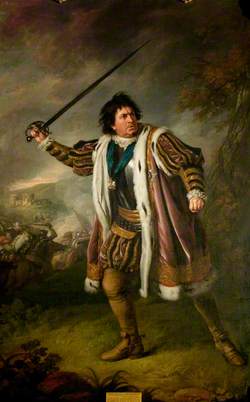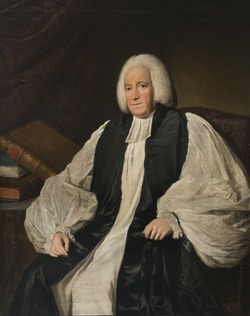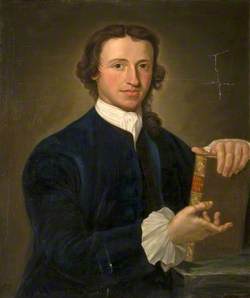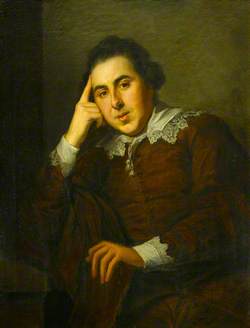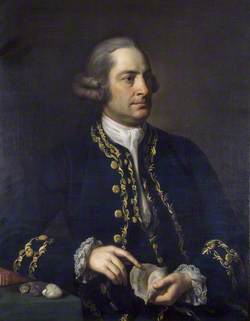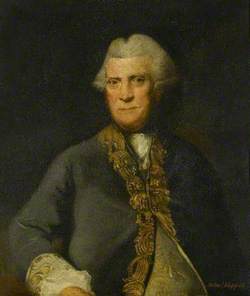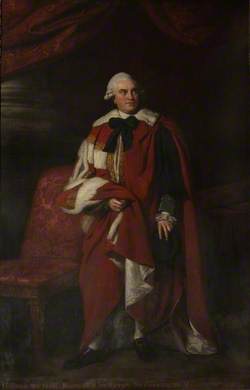How you can use this image
This image is available to be shared and re-used under the terms of the Creative Commons Attribution-NonCommercial-NoDerivatives licence (CC BY-NC-ND).
You can reproduce this image for non-commercial purposes and you are not able to change or modify it in any way.
Wherever you reproduce the image you must attribute the original creators (acknowledge the original artist(s) and the person/organisation that took the photograph of the work) and any other rights holders.
Review our guidance pages which explain how you can reuse images, how to credit an image and how to find more images in the public domain or with a Creative Commons licence available.
DownloadBuy a print or image licence
You can purchase this reproduction
If you have any products in your basket we recommend that you complete your purchase from Art UK before you leave our site to avoid losing your purchases.
Notes
Add or edit a note on this artwork that only you can see. You can find notes again by going to the ‘Notes’ section of your account.
The picture depicts the meeting of the Trojan prince Aeneas and the Carthaginian queen, Dido, as described in Book I of Virgil's 'Aeneid'. Following the sack of Troy, Aeneas and his followers are shipwrecked on the coast of North Africa, near the city of Carthage. There, Aeneas meets his mother, Venus, disguised as a huntress. She tells him the sad history of Dido, who was forced to flee her home in Tyre and to build a new citadel at Carthage. Venus envelops Aeneas and his compatriot Achates in a shroud of mist to enable them to penetrate Dido's citadel undetected. Upon entering the temple of Juno, Aeneas sees Dido seated upon her throne, welcoming a number of his fellow Trojans whom he had believed drowned in the recent shipwreck, and expressing her desire to see their 'king' Aeneas. At that moment the mist clears and Aeneas reveals his identity to Dido. This is the precise moment portrayed by Dance.
The only specific reference to the making of this picture is the Grand Tour diary of James Martin who, on 10 July 1764, noted that he had seen in Dance's studio 'several portraits by Him & a History Piece begun represg. Eneas appearing to Dido; It appeared to me to be well composed'. On 2 November 1764 he wrote: 'wt to Mr Dance's saw there a picture he has almost finished for Lord Gray representing Aeneas appearing to Dido. I think it has great merit for the Variety, Expression & attitudes of the Figures; they seem to me about a third as tall as Life' (transcription from the original manuscript in the Brinsley Ford Archive, Paul Mellon Centre, London). Dance's composition, with its severely Neoclassical style, is reminiscent of the work of Nicolas Poussin, the figures depicted in a frieze-like manner across the picture plane, which is itself carefully modulated by the supporting architectural framework.
Dance exhibited 'The Meeting of Dido and Aeneas' at the Society of Artists in 1766, the painting presumably heralding his return to Britain. The following year his Royal commission, 'Timon of Athens', was also exhibited there. Dance exhibited further classical subjects at the Royal Academy, although his mainstay continued to be portraits. A man of independent means, Dance all but retired as a professional artist in the later 1770s. He resigned from the Royal Academy in 1790, on becoming a Member of Parliament. His wealth was further increased by marriage to a rich widow. In 1800 Dance changed his surname to 'Dance-Holland' by Royal license, Holland being the surname of a distant cousin of his wife.
Further reading: David Goodreau, 'Nathaniel Dance', exhibition catalogue, The Iveagh Bequest, Kenwood, London 1977 p.10
John Ingamells, 'A Dictionary of British and Irish Travellers in Italy 1701–1800 compiled from the Brinsley Ford Archive', New Haven and London 1997, pp.275 and 431, Martin Postle October 2000
Title
The Meeting of Dido and Aeneas
Date
exhibited 1766
Medium
Oil on canvas
Measurements
H 124 x W 174 cm
Accession number
T06736
Acquisition method
Purchased with the assistance of the Art Fund 1993
Work type
Painting


